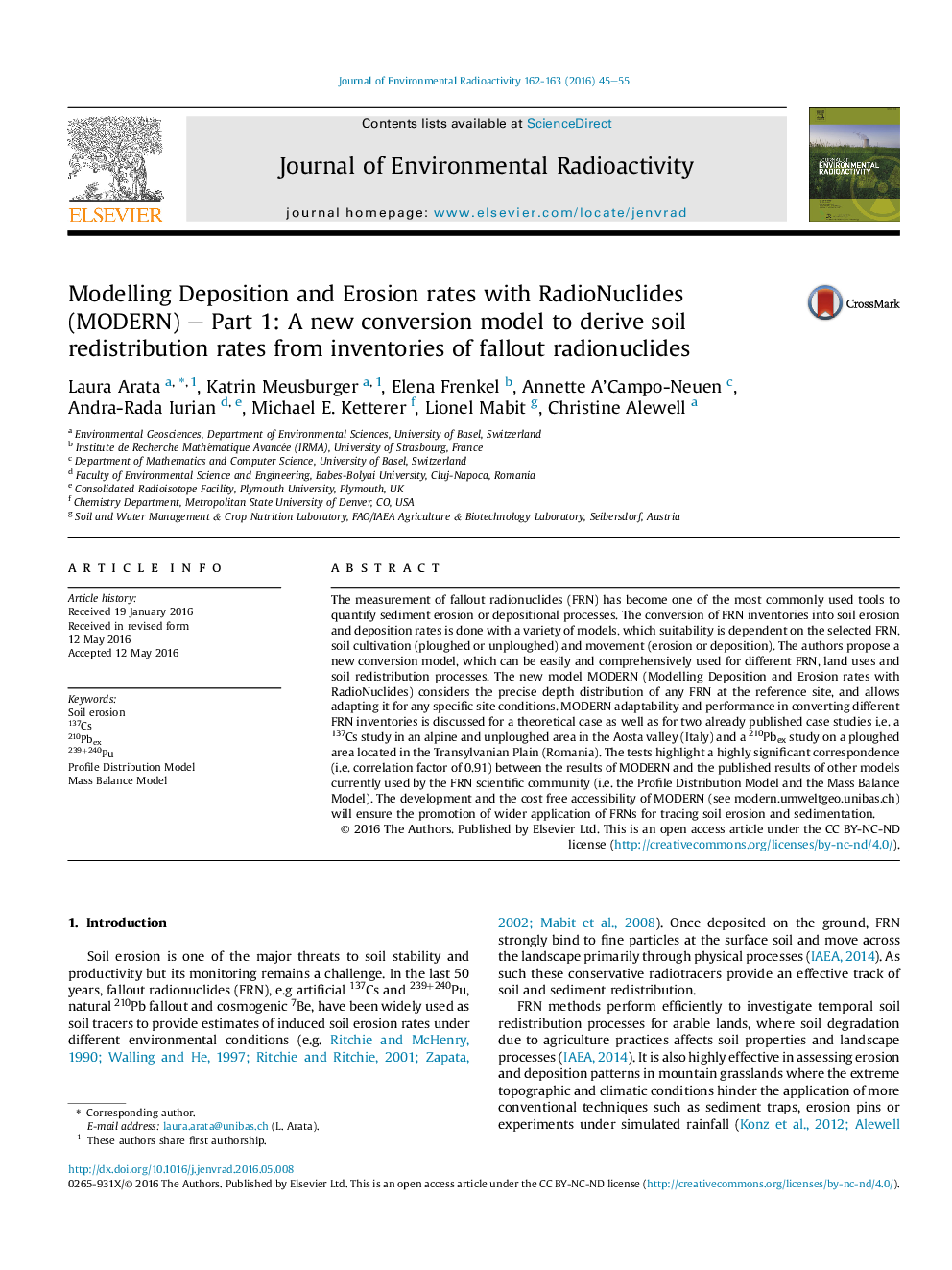| Article ID | Journal | Published Year | Pages | File Type |
|---|---|---|---|---|
| 8081494 | Journal of Environmental Radioactivity | 2016 | 11 Pages |
Abstract
The measurement of fallout radionuclides (FRN) has become one of the most commonly used tools to quantify sediment erosion or depositional processes. The conversion of FRN inventories into soil erosion and deposition rates is done with a variety of models, which suitability is dependent on the selected FRN, soil cultivation (ploughed or unploughed) and movement (erosion or deposition). The authors propose a new conversion model, which can be easily and comprehensively used for different FRN, land uses and soil redistribution processes. The new model MODERN (Modelling Deposition and Erosion rates with RadioNuclides) considers the precise depth distribution of any FRN at the reference site, and allows adapting it for any specific site conditions. MODERN adaptability and performance in converting different FRN inventories is discussed for a theoretical case as well as for two already published case studies i.e. a 137Cs study in an alpine and unploughed area in the Aosta valley (Italy) and a 210Pbex study on a ploughed area located in the Transylvanian Plain (Romania). The tests highlight a highly significant correspondence (i.e. correlation factor of 0.91) between the results of MODERN and the published results of other models currently used by the FRN scientific community (i.e. the Profile Distribution Model and the Mass Balance Model). The development and the cost free accessibility of MODERN (see modern.umweltgeo.unibas.ch) will ensure the promotion of wider application of FRNs for tracing soil erosion and sedimentation.
Related Topics
Physical Sciences and Engineering
Energy
Nuclear Energy and Engineering
Authors
Laura Arata, Katrin Meusburger, Elena Frenkel, Annette A'Campo-Neuen, Andra-Rada Iurian, Michael E. Ketterer, Lionel Mabit, Christine Alewell,
